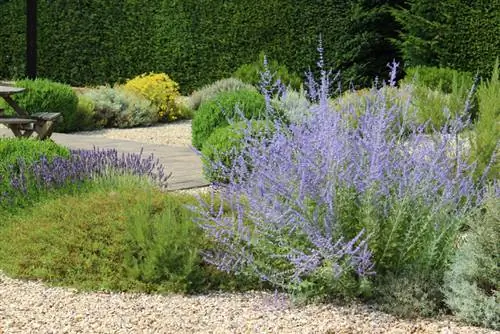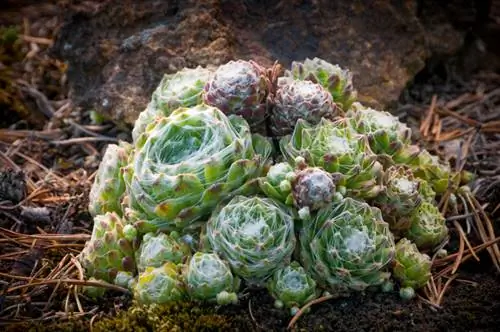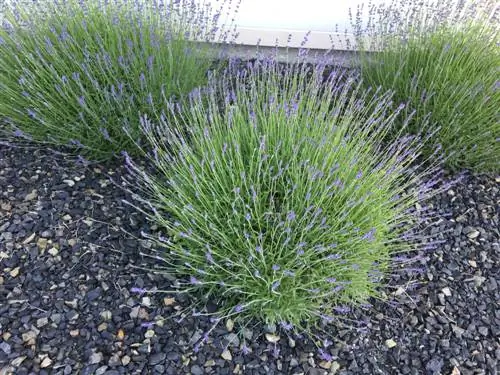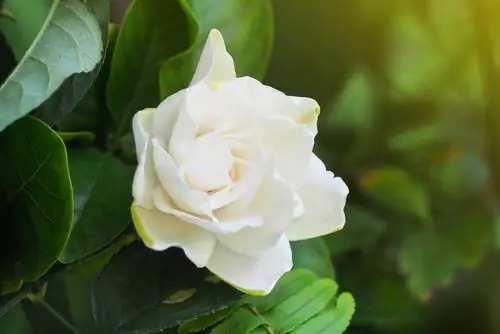- Author admin [email protected].
- Public 2023-12-16 16:46.
- Last modified 2025-01-23 11:19.
Barren: The range of suitable gravel garden plants is huge. Particularly subshrubs, perennials, annual plants as well as bulbous and tuber plants dominate here. A few small-crowned trees or shrubs that do not grow too lush form the framework for the planting. The main actors in the gravel garden are the subshrubs and perennials, while the bulb and tuberous plants only appear at certain times.

Which plants are suitable for a gravel garden?
Suitable plants for a gravel garden are diverse and include subshrubs, perennials, annuals as well as bulbous and tuberous plants. These include, for example, thistles, ice plants, sedum, sedum, small-leaved prickly nuts, silver hornwort and sun rose.
Versatile perennials
Perennials play the main role in the gravel garden. They are perennial, herbaceous plants that sprout every spring from buds close to the ground or hidden just below the ground. The various types of thistles, for example, definitely belong in a gravel garden, as do succulents such as the ice plant, the sedum or the sedum. Short-lived perennials such as chamomile, carnation or silky mullein provide visual highlights during the summer months.
Ground cover for the gravel garden
Also not to be missed are low, ground-covering perennials that sometimes form attractive plant carpets. Examples of the gravel garden are:
- Small-leaved prickly nut (Acarena microhylla)
- Silver hornwort (Cerastium tomentosum var. columnae)
- Sunflower (Helianthemum nummularium)
- Cambridge cranesbill (Geranium x cantabrigiense)
- Early blooming thyme (Thymus praecox)
Flowers by season
When choosing perennials, make sure to purchase species with different flowering times. This means that the gravel garden blooms all year round and not just in certain months. There is a large selection of spring bloomers (e.g. peony carnation, spring Adonis, speedwell or pasque flower), summer bloomers (e.g. bluebells, knapweed, sword elecampane, orange hedgehog's head, flax, cinquefoil) and autumn bloomers (e.g. various asters, sedum, dost). In addition to perennials, you should also choose various bulbous and bulbous plants.
Woods and shrubs
The drier the living environment, the rarer large trees are. That's why you should use small trees in the gravel garden that don't cast deep shade and don't put too much pressure on neighboring plants. For example, columnar-growing trees such as conifers or (rocket) juniper are very suitable, but the following are also perfect:
- Narrow-leaved buddleia (Buddleja alternifolia)
- Butterfly bush (Buddleja davidii)
- Common bladderwort (Colutea arborescens)
- Purple honeysuckle (Cytisus purpureus)
- Spanish broom (Genista hispanica)
- Summer tamarisk (Tamarix ramosissima)
- Pike rose (Rosa glauca)
- Common Judas tree (Cercis siliquastrum)
- Cotinus coggyria
- Sade tree (Juniperus sabina)
Subshrubs
These are long-lived plant species that form a woody framework near the ground from which new, herbaceous shoots sprout every spring. Many Mediterranean herbs, for example, belong to this group. These types are particularly suitable for the gravel garden:
- True wormwood (Artemisia absinthium)
- Common lavender (Lavandula angustifolia)
- Blue Rue, Perovskie (Perovskia atriplicifolia)
- Lemon thyme (Thymus x citriodorus)
- Spice Sage (Salvia officinalis)
- Evergreen Candytuft (Iberis sempervirens)
- Rosemary (Rosmarinus officinalis)
Tip
Many grasses are also predestined for the gravel garden. There are numerous interesting species, for example with blue leaves (e.g. blue fescue, Magellan bluegrass) or with pretty flower or fruit heads (e.g. pennisetum, feather grass, silver ear grass).






